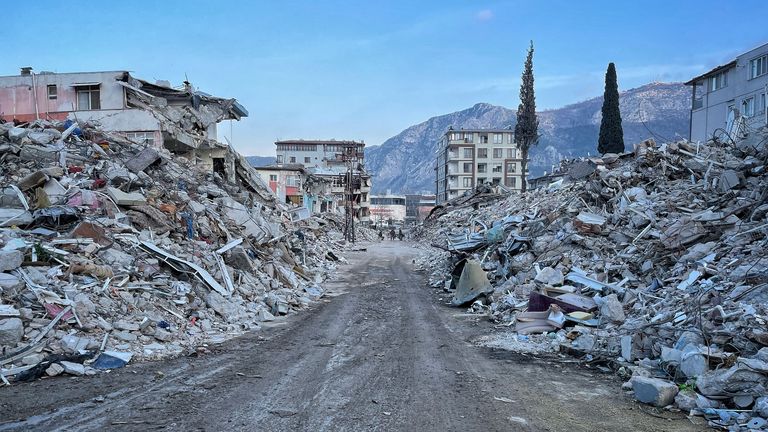Turkey’s Earthquakes Bring Awareness to Earthquake Preparedness
The recent earthquakes in Turkey have highlighted the necessity for earthquake preparedness.
February 9, 2023
On February 6, 2023, a magnitude 7.8 earthquake struck Turkey with its epicenter near Gaziantep, a city in the southern part of the country close to the Syrian border. Nine hours later, a magnitude 7.5 earthquake struck further southwest. The quakes were devastating; Reuters states that the two earthquakes caused close to $34.2 billion in damage due to building collapses and other destroyed infrastructure. Moreover, they resulted in the loss of over 44,000 lives, making the quakes the most deadly in Turkey’s history (Reuters).
Since the February 6th earthquakes, Turkey has been victim to thousands of aftershocks, many of which with relatively high magnitudes. People were buried under rubble, and survivors were left with food, clothes, and shelter. Because of this disaster, the Turkish government declared a three-month-long state of emergency and requested international assistance. Along with help from the Turkish Red Crescent, countries from across the globe have been sending disaster relief to help Turkey and neighboring Syria recover from this horrible event. Piper Guyton (12) shares that she remembers “reading about the earthquakes in the news, and [she hopes] the recovery efforts will successfully help people in Turkey and Syria get the help they need.” Even today, Turkey is still being hit by ruinous earthquakes, emphasizing the continued necessity for international aid (Center for Disaster Philanthropy).
One of the leading causes of the massive destruction of these earthquakes was the lack of earthquake preparedness in Turkey. Although a national building code was established to prevent excessive damage, the regulations were not effectively enforced, and many buildings did not meet safety standards. Since the earthquakes affected a densely populated region, if one building were to collapse, the others would certainly be affected. The sediment that buildings were built on top of could have also played a role in the devastating impact of the earthquakes. If the soil was too loose and granular, the force of a strong earthquake could easily damage structures built on top of it (NC State).
Here in Southern California, we are also in danger of earthquakes. Although the damage due to quakes may not be as extreme as they were in Turkey due to more strictly enforced safety standards and better infrastructure, it is still important to practice earthquake preparedness. The American Red Cross provides a list of things you can do to make sure you are prepared for an earthquake:
- Keep emergency supplies in an accessible spot, and make sure it includes food, water, medication, a first aid kit, a flashlight, batteries, and important documents.
- Identify items in your home that could fall during shaking, and secure them to avoid injuries during an earthquake.
- Practice how to “drop, cover, and hold on” in the event of an earthquake to ensure that you can effectively protect yourself.
- Learn First Aid and CPR so you can assist others if they become injured during an earthquake.



































